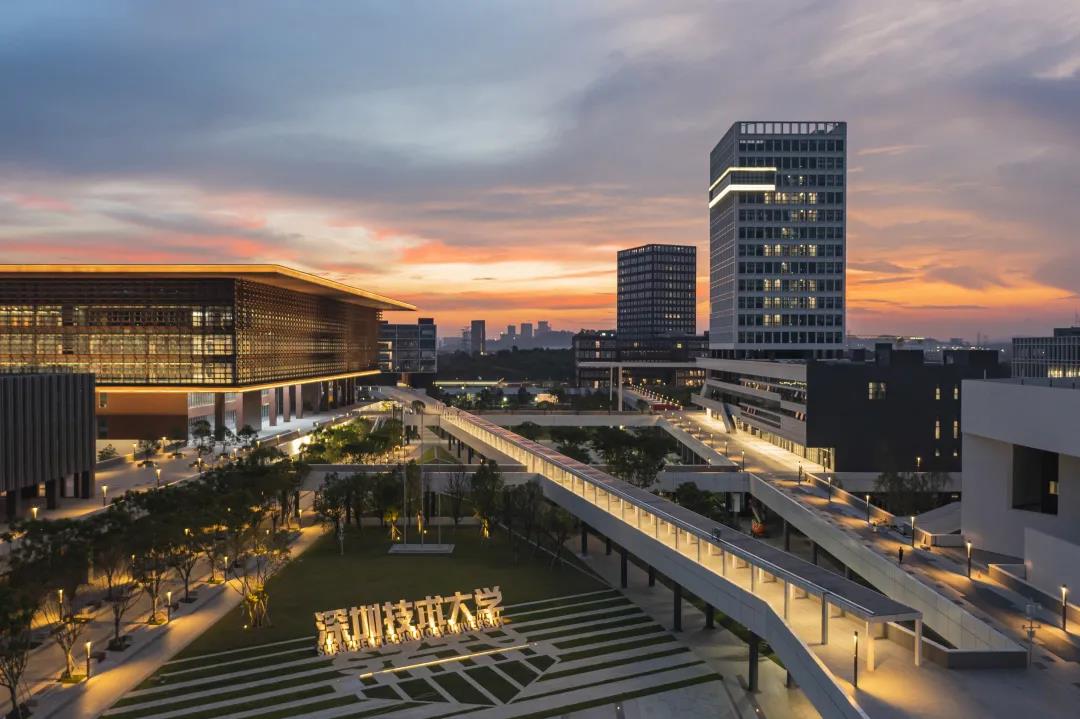The 15th National Social Practice and Science Competition on Energy Conservation & Emission Reduction for College Students (hereinafter referred to as the Competition) was concluded at Tianjin University in August. Eight projects of Shenzhen Technology University (SZTU) reached the final. It was the third time SZTU had taken part in the Competition and students won three national second prizes and two national third prizes this year, making great progress compared with the past two years.

The school-level competition is organized by College of New Materials and New Energies and Julong College. [Photo provided to Party Affairs Committee Publicity Office]
The Competition is an important science and technology innovation contest for college students organized by the Department of Higher Education of Ministry of Education, which coincides with the national policies of energy conservation and emission reduction. This year, a total of 46,139 students from 623 higher education institutions participated in the Competition with 5,373 projects. Organized by the College of New Materials and New Energies and Julong College, the school-level competition of SZTU was held in May and selected nine projects to enter the final. To better help students prepare for the final competition, Julong College arranged tutorial supervision and mock presentation during the summer vacation.
List of winners
National second prize
1. Dual loop drying system based on the combination of optothermal and air energy
Team members: Liu Lijie, Yue Jianglong, Wei Daqi, Wu Mingen, Lu Haopei, Yang Ziyue, Huang Baiming
Instructor: Ma Lei
College: College of New Materials and New Energies
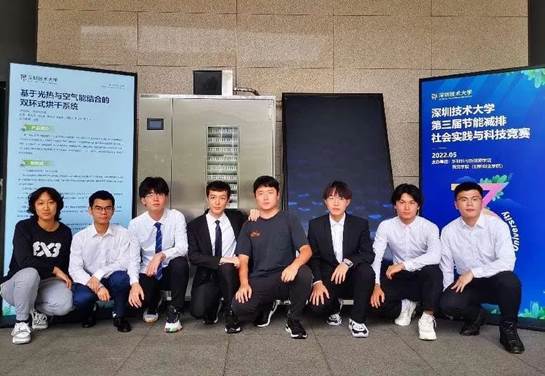
Team members of the dual loop drying system [Photo/College of New Materials and New Energies]
The system uses open and closed loop drying modes in one shared drying room and enables free switch among three drying modes. It is energy-saving and can easily apply to many different scenes.
2. Biomimetic micro/nano composite material and its application in energy saving in buildings
Team members: Zheng Jiong, Hong Ruolan, Liang Zijun, Zou Biao, Wen Leyan, Xie Zeman
Instructors: Yang Fan, He Bin, Yu Beibei
College: Julong College
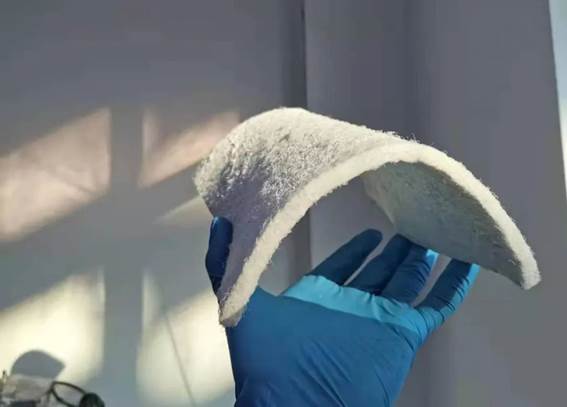
The biomimetic micro/nano composite material [Photo/Julong College]
The material boasts excellent thermal insulation by simulating the structure of brine shrimp eggs. It also enjoys super-hydrophobicity, flame retardancy and low density, making it suitable for interior walls of buildings and the outer surface of objects, which can help reduce energy consumption.
3. An economical and convenient integrated photovoltaic hydrogen production device based on additive manufacturing technology
Team members: Chen Shuying, Zhang Shun, Lin Weiqiang, Tang Jiayi, Li Zhouyi, Huang Shangming, Yang Xinyu
Instructors: Wang Ning, Li Nana
College: College of New Materials and New Energies
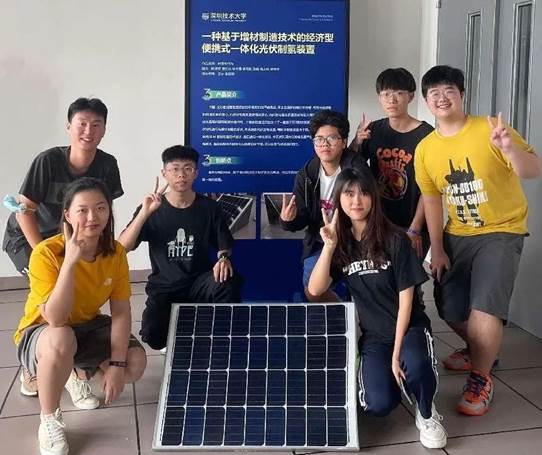
Team members of the photovoltaic hydrogen production device [Photo/College of New Materials and New Energies]
The device can not only reduce the cost of hydrogen production by using waste photoelectricity to electrolyze water to produce hydrogen but also improve the electrochemical active specific surface area (ECSA) by using lattice-like porous electrodes prepared by additive manufacturing technology.
National third prize
1. A self-powered and self-aware pseudo 3D projection intelligent traffic marking system
Team members: Zhou Le, Yang Zikai, Wen Zhihao, Zhu Junwei, Huang Kangdong
Instructors: Yin Xiaohong, Wang Yanyan
College: College of Urban Transportation and Logistics
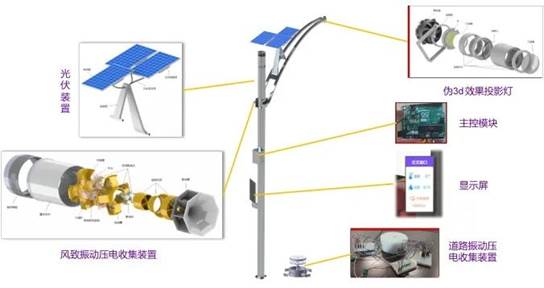
The intelligent traffic marking system [Photo/College of Urban Transportation and Logistics]
By using multiple modules for different functions such as photovoltaic power generation, road vibration piezoelectric collection, wind-induced vibration piezoelectric collection, environmental perception, environmental data processing, etc., the self-powered and self-adaptive system can project relevant logos with pseudo 3D effect at nighttime, which is low-carbon, energy saving and reliable.
2. Urban rail transit integrated system for encouraging green travel based on MaaS concept
Team members: Peng Xinyi, Liu Yuan, Huang Xinyu, Han Yingchuan, Luo Haokun
Instructor: Li Wei
College: College of Urban Transportation and Logistics

The urban rail transit integrated system [Photo/College of Urban Transportation and Logistics]
The system realizes the integration and sharing of operational data through the path dynamic reachability algorithm and recommends precise and personalized routes to users via portrait technology. It aims to attract the public to travel eco-friendly and achieve energy conservation and emission reduction in the field of transportation.
Drafted by Daisy(姚琦)/ International Cooperation & Student Affairs Office
Revised by International Cooperation & Student Affairs Office
Edited by International Cooperation & Student Affairs Office
